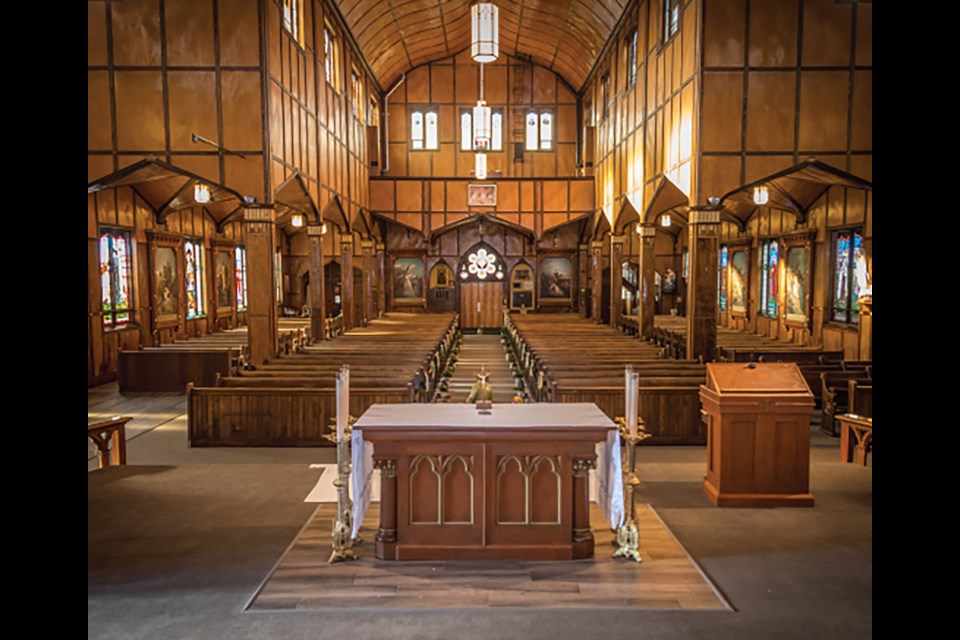The population in this area swells every year with a huge influx of cottagers, tourists and pilgrims.
Each year, more than 120,000 people make a pilgrimage to see the Martyrs' Shrine. Some are tourists, some are interested in Canadian history and others come to pay respect to the martyrs, including St. Jean de Brébeuf.
Jesuit St. Jean de Brébeuf, and seven of his companions helped establish the settlement at Sainte-Marie among the Hurons, and then gave their lives for their faith and for the Indigenous people.
The settlement at Sainte-Marie among the Hurons is the site of first contact among the Wendat people and European people nearly 400 years ago. Iroquois attacks in 1648 andd 1649 resulted in the deaths of Antoine Daniel, Jean de Brébeuf, Gabriel Lalemant, Charles Garnier and Noël Chabanel — all of whom were later canonized.
For Fr. Michael Knox S.J., who has been the director of the Martyrs' Shrine for nearly eight seasons, the Shrine is an integral part of our history in Canada.
“It is difficult to deeply understand one’s identity as a Canadian without coming to this Shrine and the area,” explains Knox.
For Knox that contact point between the Wendat and the first Europeans is woven into who we are as a people.
“Coming to this site gives every person a taste of that history,” notes the Jesuit scholar.
“People take their personal experience and reflect on that history in their minds and hearts.”
For those seeking a more religious experience, the grounds at Martyrs' Shrine offer many places for deep contemplation on the stations of the cross.
People from many different cultural communities make regular pilgrimages to the Shrine to practise their faith.
The site itself was chosen because it sits higher on a hill placing the faithful closer to God.
Knox notes that this is a natural spot for a shrine as it is above Sainte-Marie among the Hurons, which is the final resting place of some of the martyrs.
Fr. John M Fillion first established the church in the early 1920s, and assisted in the process of canonization for the martyrs, which took place in 1930.
The Shrine's church, the Church of Saint Joseph was built with the help of local ship builders in the 1920s. The church was designed with two key features to highlight the Indigenous people — the ceiling is shaped like an upside down canoe, and the church is elongated to evoke a long house.
The building itself is made of wood and stone and not insulated so the Martyrs' Shrine is open the first week of May until the middle of October.
Since its original construction, there have been other features added to the grounds over time. Like the fountains and gardens at front of the Shrine.
When then-Pope John Paul II came to the Shrine on September 15, 1984, some forested lands were cleared to welcome the tens of thousands of people that came on that day.
This opened up the land providing sites where pilgrims have erected their own shrines.
“It’s a very large space for private prayer, community prayer, worship and for large groups to gather as families to enjoy nature or stay for a picnic," Knox explains. “At the heart of our presence here [originally] was to locate the resting places of St. Jean de Brébeuf."
Over the last 95 years, while the grounds have changed, the Shrine has remained as is — a site for quiet reflection about Jesuits who lost their lives for their faith, the first Europeans to make contact with the Wendat people and a place to enjoy nature’s beauty.
For Knox, sharing the space, whether it be for prayer, pilgrimage or the natural beauty of the grounds, reminds us all that to be human is to love to give and to share.
For more information about the Martyrs' Shrine or to plan a trip to see the grounds, click here.



